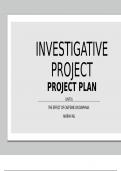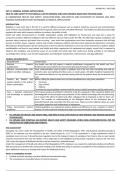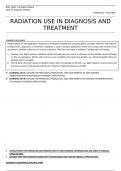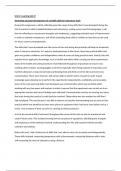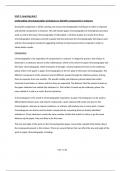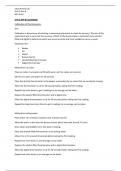Pearson BTEC • Applied Science 2016 NQF
Latest uploads for Applied Science 2016 NQF at Pearson BTEC. Looking for Applied Science 2016 NQF notes at Pearson BTEC? We have lots of notes, study guides and revision notes available for Applied Science 2016 NQF at Pearson BTEC.
-
2238
-
52
-
338
Modules Applied Science 2016 NQF at Pearson BTEC
Notes available for the following courses of Applied Science 2016 NQF at Pearson BTEC
- Unit 1 - Principles and Applications of Science I
- Unit 2- Practical Scientific Procedures and Techniques
- Unit 3 - Science Investigation Skills
- Unit 4 - Laboratory Techniques and their Application
- Unit 5 - Principles and Applications of Science II
- Unit 6 - Investigative Project
- Unit 7 - Contemporary Issues in Science
- Unit 8 - Physiology of Human Body Systems
- Unit 9 - Human Regulation and Reproduction
- Unit 10 - Biological Molecules and Metabolic Pathways
- Unit 11 - Genetics and Genetic Engineering
- Unit 12 - Diseases and Infections
- Unit 13 - Applications of Inorganic Chemistry
- Unit 14 - Applications of Organic Chemistry
- Unit 15 - Electrical Circuits and their Application
- Unit 16 - Astronomy and Space Science
- Unit 17 - Microbiology and Microbiological Techniques
- Unit 18 - Industrial Chemical Reactions
- Unit 19 - Practical Chemical Analysis
- Unit 20 - Biomedical Science
- Unit 21 - Medical Physics Applications
- Unit 22 - Materials Science
- Unit 23 - Forensic Evidence, Collection and Analysis
- Unit 24 - Cryogenics and Vacuum Technology
- Unit 25 - Forensic Fire Investigation
- Unit 26 - Forensic Traffic Accident Investigation
Popular books Pearson BTEC • Applied Science 2016 NQF

Frances Annets, Shirley Foale, Roy Llewellyn, Ismail Musa, Sue Hocking, • ISBN 9781292134093

John W. Davies, Ian K. Dunn • ISBN 9780273729525
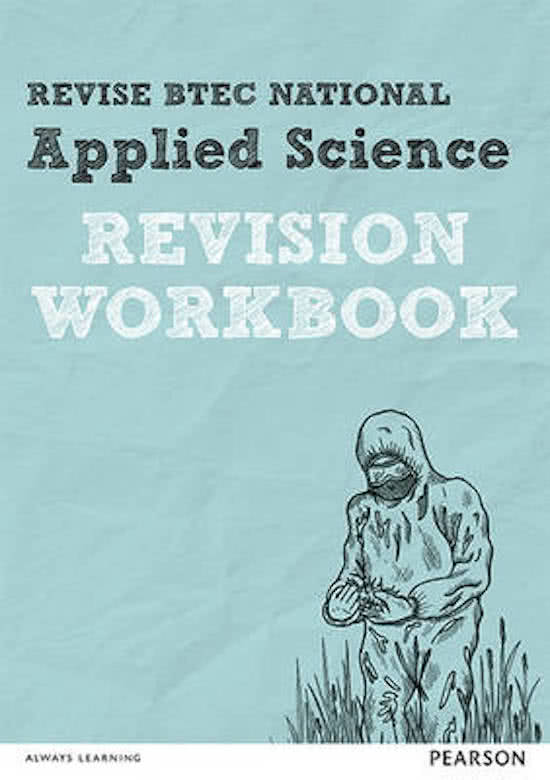
ISBN 9781292150031

Ward Merkeley • ISBN 9781664136700

David Ballard, John Bull • ISBN 9780435692124
Latest notes & summaries Pearson BTEC • Applied Science 2016 NQF
A.P1 DESCRIBE THE ORGANISATION AND FUNCTION OF THE NERVOUS SYSTEM IN RELATION TO CARDIOVASCULAR AND RESPIRATORY REQUIREMENTS A.M1 EXPLAIN HOW NERVOUS IMPULSES ARE INITIATED, TRANSMITTED AND COORDINATED IN THE CONTROL OF THE CARDIOVASCULAR AND RESPIRATORY SYSTEMS A.D1 ASSESS THE ROLE OF THE NERVOUS SYSTEM IN COORDINATING THE CARDIOVASCULAR AND RESPIRATORY SYSTEMS
In this experiment, caffeine was used to determine the increase in heartrate, when increasing the amount of concentration. Caffeine was used on a water flea known called daphnia, to see the outcome. The results show that an increase of caffeine concentration increases the heartrate of the daphnia. This was tested by the daphnia being observed underneath the microscope. This technique was shown to be an effective way of analysing the heartrate, this would mean that the same effect is also opposed...
I chose to investigate the different concentrations of caffeine on the heart rate because I wanted to see how it impacts the human heart when the concentration of caffeine is increased. Does the heartbeat stay consist, drop, or increase? I hope to find out that with an increase of concentration given to the daphnia the rate of the heartbeat should also increase.
I chose to investigate the different concentrations of caffeine on the heart rate because I wanted to see how it impacts the human heart when the concentration of caffeine is increased. Does the heartbeat stay consist, drop, or increase? I hope to find out that with an increase of concentration given to the daphnia the rate of the heartbeat should also increase.
Radiation is used every day in the UK, it is used for different purposes such as medical, industrial, research and communication. Some of these can potentially be harmful when exposed, which must be controlled effectively. The health and safety Executive (HSE) regulates the work which exposes radiation to workers, the public or both.
Medical physics is the application of physics to medicine or healthcare, using the physic concepts, theories, and methods to help screen, diagnoses, or treatment. Radiation is used in medical application, which is an energy that transfers from one place to another in the form of a wave or particle. There are two types of radiation, ionising and non-ionisng.
Learning aim C: Explore manufacturing techniques and testing methods for an organic solid This assignment is to assist and guide you only, not to be copied word for word. Distinction Level, Please contact me if you have any further questions. Briefs may be sourced for you.
Unit 2 Aim D assignment. Aciheived Distinction with overall grade D*D*D*.
Unit 2 Aim C assignment. acheived D* with overall grade D*D*D*.
unit 2 Learning Aim B. Achevied Distinction with overall grade D*D*D*.



